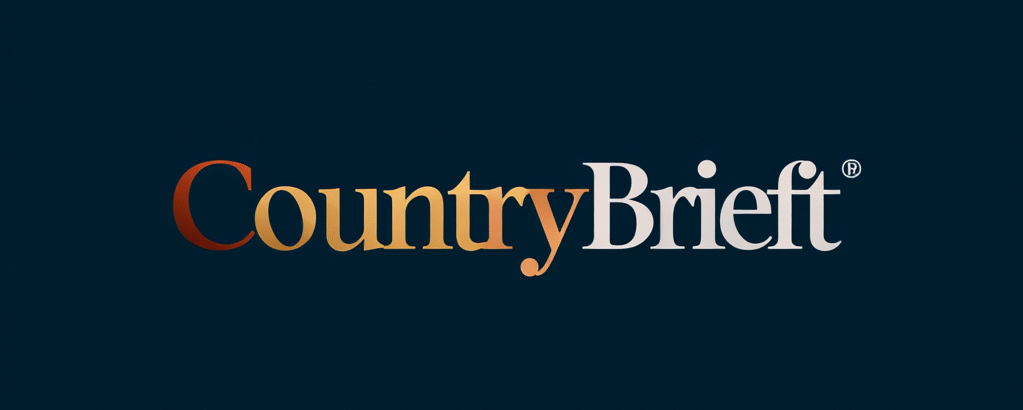The Condition and Future of Ukrainian Business: Inside and Outside Perspectives

Writing about the Ukrainian business outlook right now feels like trying to predict the weather during a hurricane. Things are tough, no doubt about it. Businesses are showing incredible grit, finding ways to keep going even with everything going on. But there’s a lot of uncertainty about what comes next. This article looks at how Ukrainian businesses are managing now and what might happen down the road, both from inside the country and from folks looking in.
Key Takeaways
- Ukrainian businesses have shown surprising strength and ability to adapt since the invasion began, helped by smart policies and outside support. However, the future is still very unclear.
- Rebuilding and improving key sectors, especially construction, is seen as a major way to boost the economy. This means bringing practices in line with European standards and fixing old problems.
- Getting people back to Ukraine and keeping skilled workers is a big challenge. This involves making it easier for refugees to return and for underrepresented groups to join the workforce.
- To attract outside money, Ukraine needs to prove it’s a trustworthy place to invest. This means being open about how things work, reducing risks, and changing how business is done with international partners.
- Building a strong economy for the long haul means learning from past reforms, keeping the economy stable, and focusing on green rebuilding efforts.
Navigating Economic Resilience and Uncertainty
Economic Recovery Amidst Invasion
It’s pretty wild how Ukraine’s economy has held up given everything that’s been going on. When the full-scale invasion started, everyone expected a total collapse, but that just hasn’t happened. A big part of this is how quickly businesses and people adapted. They found ways to keep going, even with all the disruptions. Plus, the help from other countries has been a massive factor, keeping things from falling apart completely. We’re seeing a slow comeback, but it’s definitely a comeback.
Factors Driving Resilience
So, what’s making this economy so tough? It’s a mix of things. For starters, the government stepped in with some smart policies early on to stabilize things. Then you have the everyday folks and businesses – they’ve been incredibly resourceful, reconfiguring how they operate and what they do. Think about it: supply chains got messed up, people moved, but workarounds were found. And, of course, the financial and material aid from international partners has been a lifeline, preventing a complete breakdown.
Here are some key elements:
- Adaptability of the workforce: People found new jobs, learned new skills, and kept essential services running.
- Government support measures: Policies aimed at keeping businesses afloat and supporting households played a big role.
- International financial aid: Direct financial assistance and in-kind support have been critical for stability.
- Reconfiguration of assets and activities: Businesses and individuals have actively rebuilt and adjusted their operations.
The path forward is still really unclear. A lot depends on when and how the security situation improves, and how long the international support continues. It’s a constant balancing act.
Forecasting Future Outlooks
Looking ahead is tricky, to say the least. The biggest question mark is the security situation – when will it stabilize, and how? This uncertainty makes any long-term predictions feel a bit like guesswork. The amount and duration of external support are also huge factors. If that support were to drop off unexpectedly, it could really shake the economic stability we’ve worked so hard to maintain. On the flip side, if things improve on the security front sooner rather than later, that could really kickstart reconstruction and recovery, bringing people back and boosting confidence. This could lead to a surge in demand, especially in areas like construction.
Here’s a snapshot of what could happen:
- Positive Scenario: Improved security leads to accelerated reconstruction, increased confidence, and a return of displaced people, driving strong economic growth. This would likely be fueled by continued international backing and rising foreign investment.
- Challenging Scenario: A prolonged conflict or a sudden reduction in external aid could lead to budget deficits, external imbalances, and a weakening of the economic foundations that have supported resilience.
- Post-Martial Law Adjustments: Lifting martial law restrictions will bring more clarity but also new policy challenges. For instance, some skilled workers, like those in the IT sector, might plan to leave the country once travel restrictions ease, posing a risk to that industry’s performance.
Rebuilding and Modernizing Key Sectors
Ukraine’s economy is facing a massive rebuilding effort, and some sectors are really stepping up to the plate. It’s not just about putting things back together; it’s about building them back better, smarter, and more in line with what the rest of Europe is doing. Think of construction, for instance. It’s seen as a major engine for growth right now, with a lot of potential to boost the GDP significantly. This isn’t just wishful thinking; there’s a clear vision and international partners are ready to chip in.
Construction as a Growth Engine
The construction sector is poised to become a powerhouse for Ukraine’s economic recovery. Analysts are predicting it could jump from a few percent of GDP to over ten percent. This surge isn’t just about building houses and roads; it’s about creating a ripple effect. We’re talking about boosting the production of building materials, forming new business clusters, and creating a lot of jobs. It’s a chance to really kickstart the economy.
Aligning with European Standards
But here’s the thing: simply rebuilding isn’t enough. The goal is to create a modern construction industry that meets European Union standards. This means everything from how projects are planned and managed to the materials used and how they’re sourced needs an upgrade. It’s about becoming more sustainable, more transparent, and more open to fair competition. This alignment is key for attracting foreign investment and integrating Ukraine more fully into the European economic space.
Addressing Systemic Barriers
Of course, it’s not all smooth sailing. There are some pretty big hurdles to clear. A recent survey showed that nearly half of businesses see a lack of clear permits and procedures as their biggest problem. Another big issue, with over 20% of respondents pointing to it, is the instability of the rules – the ‘rules of the game’ as they say. Without predictable regulations and a more streamlined approach to getting things done, it’s tough to get big projects off the ground.
The current institutional setup often struggles with quick, informed decisions. Frequent staff changes, poor coordination between different government bodies, and a lack of institutional memory mean that things can get bogged down. Many local areas also lack up-to-date planning documents, making it hard for investors to even figure out where and how to propose projects.
Here are some of the main issues businesses are flagging:
- Permitting and Licensing: The process for getting permits and licenses is often complicated and lacks transparency. Digital tools are seen as a way to fix this.
- Regulatory Predictability: Businesses need to know that the rules won’t change overnight. This stability is crucial for making long-term investment decisions.
- Corruption: While not explicitly detailed in every point, the demand for transparency and clear procedures often points to a need to combat corruption that can hinder progress and inflate costs.
- Standardization: Aligning with international standards, especially EU ones, is vital for market access and investor confidence. This includes everything from building codes to material quality.
Attracting and Retaining Human Capital
Getting people back to Ukraine and keeping them here is a big deal for rebuilding. It’s not just about having enough hands for the job, but about having the right skills and the motivation to stick around. Ukraine’s future really depends on its people.
Incentivizing Return Migration
Lots of Ukrainians are still living abroad, and convincing them to come back is a challenge. Wages are going up here, which is good, but they’re still not quite matching what’s offered in places like the EU. We need a solid plan to make returning appealing. This could mean tax breaks for skilled workers who come back, or maybe even help from host countries to support returning Ukrainians. It’s about showing them there are real opportunities and a future for them in Ukraine.
- Financial Incentives: Offering tax holidays or grants for returning professionals and entrepreneurs.
- Job Matching Programs: Connecting returnees with jobs that match their skills and experience gained abroad.
- Support Services: Providing assistance with housing, schooling for children, and integration into local communities.
The government is working on new ways to keep Ukrainians connected to home, even when they’re far away. This includes better communication and making it easier for those abroad to help those who are returning. It’s a complex puzzle, but figuring it out is key.
Integrating Underrepresented Groups
We also need to make sure everyone who is in Ukraine can contribute. This means looking at groups that haven’t always had full access to the job market. Think about women, veterans, people with disabilities, and older workers. We need to create pathways for them to get back to work, maybe with special training or by making workplaces more accessible. For example, companies could offer training for managers on how to work with veterans, understanding any challenges they might face.
Leveraging Diaspora Networks
Our diaspora isn’t just a source of potential returnees; they’re also a resource right now. They can help connect Ukrainian businesses with international partners, share knowledge, and even invest. Building stronger ties with these communities abroad can create a bridge for future collaboration and support. It’s about using those existing connections to benefit the country’s economic recovery.
| Group | Potential Contribution |
|---|---|
| Skilled Professionals | Bringing back international experience and networks |
| Entrepreneurs | Starting new businesses and creating jobs |
| Investors | Providing capital for reconstruction and development |
Rebuilding International Trust and Investment
The Demand for Transparency and Accountability
Look, nobody’s handing out money without knowing where it’s going these days. After years of conflict and the general chaos that comes with it, international partners and investors are looking for more than just promises. They want to see clear records, open processes, and actual results. It’s not enough to say things are getting better; they need proof. This means Ukraine needs to show it can manage projects openly, fight off corruption, and make decisions that are easy to follow. Think of it like this: if you’re lending money to a friend, you want to know they’re not just going to blow it on something silly, right? Same idea here, but with much bigger sums and more complex projects.
- Clear Reporting: Every dollar spent needs a paper trail. This isn’t just about accounting; it’s about building confidence.
- Open Bidding: When contracts are up for grabs, everyone should have a fair shot. No backroom deals.
- Measurable Outcomes: Projects need goals that can be tracked and verified. Did the bridge get built? Is the power plant running?
The old ways of doing business, where things were a bit murky and decisions took forever, just won’t cut it anymore. The world has changed, and Ukraine needs to show it’s changed with it. This isn’t about adapting to an emergency; it’s about setting up a system that people can rely on, day in and day out.
Mitigating Investment Risks
Investing in Ukraine right now comes with its own set of challenges, let’s be honest. There’s the obvious stuff, like security concerns, but also the less visible risks: changing rules, permits that are hard to get, and a general feeling of uncertainty. For businesses, especially those from abroad, this is a big hurdle. They need to know their investment is safe and that the rules won’t suddenly change. Right now, many companies are hesitant because there aren’t clear ways to get insurance or state guarantees if something goes wrong. This means reconstruction efforts might end up being small and scattered, focusing only on the safest bets, instead of tackling the big, important projects across the whole country.
| Risk Factor | Current Impact |
|---|---|
| Security Concerns | Limits project scope and location |
| Regulatory Uncertainty | Delays decision-making and increases costs |
| Lack of Insurance/Guarantees | Deters foreign direct investment |
| Bureaucratic Hurdles | Slows down permit acquisition and project starts |
| Perceived Corruption | Erodes confidence in fair competition |
Shifting Interaction Models
It’s not just about rebuilding buildings; it’s about rebuilding how people and countries work together. International partners are looking for a new way of interacting. They’re not just sending money and hoping for the best. They want to be partners, but that means Ukraine needs to be a reliable partner too. This involves creating a stable environment where businesses can operate without constant fear of the unknown. It means having clear laws, predictable procedures, and a government that works smoothly with the private sector. Without this shift, attracting the kind of investment needed for a full recovery will be incredibly difficult. It’s about moving from crisis management to a steady, trustworthy system that can handle big projects and build lasting relationships.
Foundations for Sustainable Growth

Building a strong economy for the future means looking at what we’ve learned and setting clear goals. It’s not just about rebuilding what was lost, but about creating something better and more stable. This involves making smart choices now that will pay off for years to come, especially when it comes to how the country runs and how it interacts with the rest of the world.
Lessons from Past Reforms
Looking back at how Ukraine has tried to improve its economy before is pretty important. We’ve seen attempts at reform, some more successful than others. The key takeaway is that changes need to be consistent and well-supported. Without a steady hand and clear direction, even good ideas can fall apart. It’s like trying to build a house on shaky ground; it just won’t last.
- Reforms need to be practical, not just on paper.
- Public support and understanding are vital for changes to stick.
- Past successes often involved simplifying rules and making things more open.
Macroeconomic Stability Imperatives
For businesses to really grow and for people to feel secure, the economy needs to be steady. This means keeping inflation in check, managing debt responsibly, and having a currency that people can rely on. When the economy is stable, companies are more likely to invest, and people are more likely to spend and save. It creates a predictable environment where planning for the future is actually possible.
A stable economy isn’t just about numbers; it’s about creating a sense of security and predictability for everyone involved, from the smallest shop owner to the largest international investor.
Here’s a look at how different paths could play out:
| Scenario | GDP Per Capita Growth (Annual Avg. Next 25 Yrs) | GDP Per Capita Growth (Total Next 25 Yrs) | Rule of Law Indicator (by 2050) |
|---|---|---|---|
| Baseline Reform | 2.4% | 81% | 0.0 |
| Accelerated Reform | 3.3% | 130% | 1.0 |
| Policy Slippage | 1.1% | 29% | -0.66 |
Embracing Green Reconstruction
As we rebuild, we have a real chance to do things differently, especially when it comes to the environment. This means thinking about energy efficiency, using cleaner materials, and building in ways that are better for the planet. It’s not just about being good to the environment; it can also lead to long-term cost savings and create new kinds of jobs. Thinking green from the start will make our recovery stronger and more future-proof.
- Investing in renewable energy sources.
- Promoting energy-efficient building designs.
- Developing sustainable waste management systems.
- Using local, eco-friendly construction materials where possible.
Overcoming Regulatory and Corruption Hurdles

It’s no secret that doing business in Ukraine, especially in sectors like construction, has faced some serious roadblocks. We’re talking about rules and processes that can feel like a maze, and frankly, they often invite shady dealings. This isn’t just a minor inconvenience; it’s a big reason why investors might hesitate or why projects get stuck.
Streamlining Licensing and Permitting
The system for getting permits and licenses, particularly in construction, is a prime example. Even with digital tools, it’s still pretty opaque. Officials can drag their feet, ask for extra paperwork that isn’t even required, or just reject applications without a good reason. This creates a situation where you either have to grease some palms or watch your project stall. This lack of clear, predictable processes breeds mistrust between businesses and the government. It makes it tough for new companies, especially those from abroad, to even get started.
- Delays in approvals: Licenses and permits often take much longer than they should, with no clear deadlines for officials.
- Ambiguous requirements: Rules can be interpreted in different ways, giving officials room for discretion and potential abuse.
- Informal barriers: Even when procedures are technically followed, unofficial demands or roadblocks can appear.
Modernizing Cost Estimation Practices
When it comes to infrastructure projects, how costs are estimated and managed is another area ripe for problems. The planning documents, like spatial development plans, are often outdated. This means that projects approved today might run into issues later because the underlying plans are no longer relevant. What’s worse, sometimes decisions made years ago about land use get reversed after companies have already sunk money into a project, with no compensation. This kind of unpredictability is a huge turn-off for anyone looking to invest.
The gap between what investors expect and what they actually find on the ground is significant. This isn’t just about complex paperwork; it’s about a fundamental lack of trust and support at every level of government. Without clear standards and predictable decision-making, projects get bogged down.
Ensuring Predictable State-Business Partnerships
Beyond just permits, the actual management of projects once contracts are signed can be a mess. Different government bodies, from national ministries down to local councils, often have overlapping or unclear responsibilities. This leads to endless coordination meetings that go nowhere and a lack of clear accountability. It’s like everyone has a piece of the puzzle but no one is in charge of putting it all together. This fragmentation means projects get delayed, costs go up, and investors face not only corruption risks but also operational headaches. It’s a tough environment when you can’t rely on a stable partnership with the state. Strengthening these institutions is vital for Ukraine’s future stability and democratic development, especially as it seeks to rebuild and integrate further with the West. Ukraine’s parliament has reversed legislative changes that weakened its anti-corruption institutions.
Looking Ahead: Challenges and Opportunities
So, what’s the takeaway from all this? Ukraine’s businesses have shown incredible grit, adapting to tough times and keeping things going even with everything going on. There’s definitely a chance right now for things to really improve, with international partners ready to help and a plan starting to form. But, and this is a big ‘but’, if the country doesn’t get its act together on how things are run and get everyone on the same page with a clear strategy, this opportunity could just slip away. It’s not just about rebuilding what was lost; it’s about building something new and better, something that’s modern, fair, and ready for the future. The people are the country’s biggest asset, and focusing on them, making sure everyone has a chance to contribute, is key. It’s a long road, for sure, but with the right steps, Ukraine’s business world could really turn a corner.
Frequently Asked Questions
What is making Ukraine’s economy strong even though there’s a war?
Ukraine’s economy is showing it can bounce back. This is because businesses and people are finding ways to keep working, the government is making smart choices, and other countries are helping a lot with money and supplies. It’s like a team effort to keep things going.
Why is building and fixing things so important for Ukraine’s future?
Fixing and building is a huge deal because it creates jobs and helps the country grow. It’s not just about rebuilding what was broken, but also about making things modern and better, like how buildings are made in Europe. This can bring in more money and improve how the country works.
How can Ukraine get people to come back and work there?
To get people to return, Ukraine needs to make things attractive. This could mean offering better jobs, helping people who had to move within the country find work, and making it easier for Ukrainians living in other countries to come home. It’s about showing them there are good opportunities.
What do other countries want to see before they invest money in Ukraine?
International investors want to be sure their money is safe and used honestly. They are looking for clear rules, less corruption, and proof that things are being done the right way. Ukraine needs to show it’s a trustworthy place to put money into.
What lessons has Ukraine learned that will help it grow in the future?
Ukraine has learned from past challenges and reforms. To grow strong, it needs to keep its money stable, make fair rules for businesses, and think about building in ways that are good for the environment. Learning from mistakes and sticking to good plans are key.
What are the biggest problems Ukraine needs to fix to help businesses succeed?
There are hurdles like complicated paperwork for starting businesses and issues with corruption. Ukraine needs to simplify these processes, make sure pricing for projects is fair and up-to-date, and build stronger, more honest partnerships between the government and businesses.






